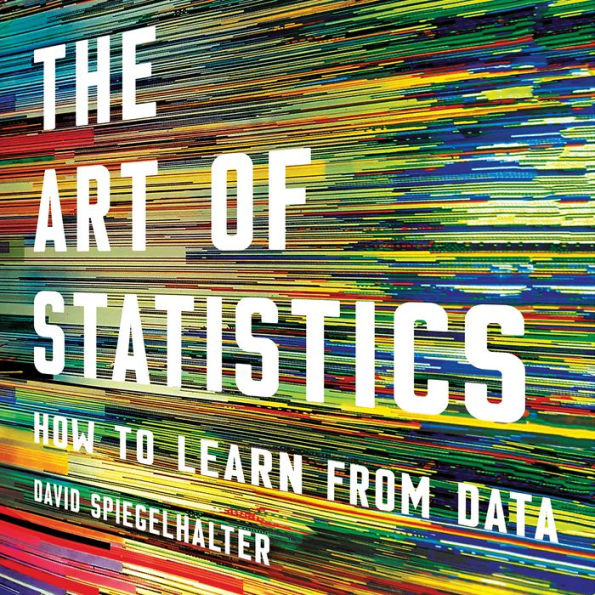Publishers Weekly
07/22/2019
Spiegelhalter (Sex by Numbers), a University of Cambridge statistician, demonstrates in his intriguing, nontechnical primer how to reliably evaluate even the most extravagant claim. Spiegelhalter’s goal is to show readers that statistics is about more than just counting numbers. A question about what happened to children having heart surgery at a particular hospital becomes a lesson in the psychological effects of “framing” results: reporting the “mortality rate” might cause alarm, but providing a “survival rate” sounds more reassuring. From issues with pie charts and the “wisdom of crowds,” to using data distributions, modelling relationships, and the correlation/causation quandary, Spiegelhalter offers clear and surprisingly enlightening examples. Concepts including margins of error and statistical significance, he demonstrates, become vital when assessing a statistics-backed claim, such as one made by a mischievous journalist who published a paper “proving” chocolate consumption caused weight loss—the data was real, but any trained statistician could see it was statistically insignificant. Spiegelhalter’s book is both fully comprehensible and valuable in a digitally driven world in which data literacy has become newly important. (Sept.)
From the Publisher
"An important and comprehensive new book"—Hannah Fry, The New Yorker
"David Spiegelhalter's The Art of Statistics shines a light on how we can use the ever-growing deluge of data to improve our understanding of the world.... The Art of Statistics will serve students well. And it will be a boon for journalists eager to use statistics responsibly — along with anyone who wants to approach research and its reportage with healthy skepticism."—Evelyn Lamb, Nature
"A book that crams in so much statistical information and nonetheless remains lucid and readable is highly improbable, and yet here it is. In an age of scientific clickbait, 'big data' and personalised medicine, this is a book that nearly everyone would benefit from reading"—Stuart Ritchie, The Spectator
"What David Spiegelhalter does here is provide a very thorough introductory grounding in statistics without making use of mathematical formulae. And it's remarkable. Spiegelhalter is warm and encouraging — it's a genuinely enjoyable read.... This book should be required reading for all politicians, journalists, medics and anyone who tries to influence people (or is influenced) by statistics. A tour de force."—Popular Science
"A call to arms for greater societal data literacy.... Spiegelhalter's work serves as a reminder that there are passionate, self-aware statisticians who can argue eloquently that their discipline is needed now more than ever."—Financial Times
Kirkus Reviews
2019-06-09
An exploration of "why we need statistics" and how to use them effectively.
The fact that Darrell Huff's delightful How to Lie With Statistics (1954) remains in print should convince readers that politicians, demagogues, and advertisers have never had trouble misleading us with numbers and graphs. Still, the study of statistics is widely considered boring, so popular books on the subject work hard to be entertaining; this expert primer mostly measures up. Distinguished British statistician Spiegelhalter (Statistics/Univ. of Cambridge; Sex by Numbers, 2015, etc.), a former president of the Royal Statistical Society, writes that "numbers do not speak for themselves; the context, language, and graphic design all contribute to the way communication is received. We have to acknowledge that we are telling a story." Some statistics are meaningless—e.g., based on average, a human has one testicle. Some are unhelpful: Vegetarians earn more than meat-eaters, but avoiding meat is unlikely to boost your income. An identical statistic can tell a horror story—e.g., a drug increases the risk of lung cancer by 14%, or not, if it increases the risk from 1 to 1.14 in 1,000. Unlike Huff's slim volume, Spiegelhalter goes beyond debunking numerical nonsense to deliver a largely mathematics-free but often formidable education on the vocabulary and techniques of statistical science. Almost everyone will understand how "median" differs from "average," and most will grasp the meaning of a bell curve or that "deduction" (using the rules of logic to come to a conclusion, Sherlock Holmes) is the converse of "induction" (using particular events to draw a general conclusion). Despite careful explanations and a plethora of tables and graphs, readers may strain to understand concepts such as the Poisson distribution, confidence intervals, bootstrapping, or standard deviation, but their efforts will be rewarded.
An admirable corrective to fake news and sloppy thinking.



